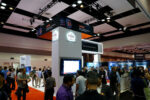Now that the dust has settled let’s talk more about TSMC’s Open Innovation Platform. Launched in 2008, OIP represents a groundbreaking collaborative model in the semiconductor industry. Unlike IDMs that controlled the entire supply chain, OIP fosters an “open horizontal” ecosystem uniting TSMC… Read More
GlobalFoundries, MIPS, and the Chiplet Race for AI Datacenters
GlobalFoundries’ (GF) acquisition of MIPS in 2025 wasn’t a nostalgic move to revive a legacy CPU brand. It was a calculated step into one of the most lucrative frontiers in semiconductors: AI, high-performance computing (HPC), and datacenters. As Nvidia, AMD, Intel, and hyperscalers embrace chiplet architectures, GF is betting… Read More
Teradyne and TSMC: Pioneering the Future of Semiconductor Testing Through the 2025 OIP Partner of the Year Award
In a significant milestone for the semiconductor industry, Teradyne was honored as the 2025 TSMC Open Innovation Platform® Partner of the Year for TSMC 3DFabric® Testing. This award, announced on September 25, 2025, underscores the deep collaboration between Teradyne, a leader in automated test equipment and robotics, and… Read More
Revolutionizing AI Infrastructure: Alchip and Ayar Labs’ Co-Packaged Optics Breakthrough at TSMC OIP 2025
In the relentless race to power next-generation artificial intelligence (AI) systems, data connectivity has emerged as the critical bottleneck. As AI models balloon in size—from billions to trillions of parameters—compute resources alone are insufficient. According to Ayar Labs, approximately 70% of AI compute time is … Read More
AI Everywhere in the Chip Lifecycle: Synopsys at AI Infra Summit 2025
At the AI Infra Summit 2025, Synopsys showed how artificial intelligence has become inseparable from the process of creating advanced silicon. The company’s message was clear: AI is an end-to-end engine that drives every phase of chip development. Three Synopsys leaders illustrated this from distinct vantage points. Godwin… Read More
Advancing Semiconductor Design: Intel’s Foveros 2.5D Packaging Technology
In the rapidly evolving landscape of semiconductor manufacturing, the demand for processors that handle increasing workloads while maintaining power efficiency and compact form factors has never been higher. Intel’s Foveros 2.5D packaging technology emerges as a pivotal innovation, enabling denser die integration… Read More
Smart Verification for Complex UCIe Multi-Die Architectures
By Ujjwal Negi – Siemens EDA
Multi-die architectures are redefining the limits of chip performance and scalability through the integration of multiple dies into a single package to deliver unprecedented computing power, flexibility, and efficiency. At the heart of this transformation is the Universal Chiplet Interconnect… Read More
Alchip’s 3DIC Test Chip: A Leap Forward for AI and HPC Innovation
Today Alchip Technologies, a Taipei-based leader in high-performance and AI computing ASICs, announced a significant milestone with the successful tape-out of its 3D IC test chip. This achievement not only validates Alchip’s advanced 3D IC ecosystem but also positions the company as a frontrunner in the rapidly evolving field… Read More
Intel Unveils Clearwater Forest: Power-Efficient Xeon for the Next Generation of Data Centers
At the recent Hot Chips conference, Intel® unveiled Clearwater Forest, its next-generation Xeon® 6 processor with efficiency cores (E-cores). The unveiling was made by Don Soltis, Xeon Processor Architect and Intel Fellow with over four decades of processor design experience and a long-standing contributor to the Xeon roadmap.… Read More
eBook on Mastering AI Chip Complexity: Pathways to First-Pass Silicon Success
The rapid evolution of artificial intelligence (AI) is transforming industries, from autonomous vehicles to data centers, demanding unprecedented computational power and efficiency. As highlighted in Synopsys’ guide, the global AI chip market is projected to reach $383 billion by 2032, growing at a 38% CAGR. This … Read More












Quantum Computing Technologies and Challenges